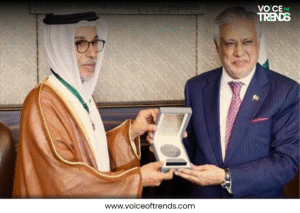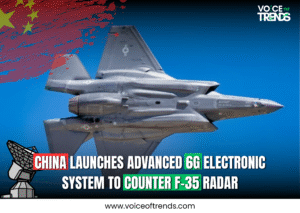In a major move that has caught the attention of global defense and financial markets, China’s state-owned jet maker has experienced a remarkable $7.6 billion price increase. The increase comes after Pakistan’s high-level deployment of the J-10C multi-role fighter jet, a powerful endorsement of Chinese aviation technology in the international defense arena.
A strategic alliance is strengthened.
Pakistan’s acquisition and operational use of the Chengdu J-10C fighter jets not only highlights Islamabad’s growing military capabilities but also the growing strategic defense cooperation between Pakistan and China. The J-10C, a 4.5-generation fighter jet equipped with advanced avionics, AESA radar, and advanced missile systems, is now playing an active role in Pakistan’s air defense fleet.
The debut of the J-10C in Pakistani skies was not just a military announcement but also sent a ripple effect across global markets. Investors responded quickly, adding $7.6 billion to the market capitalization of the Chinese jet maker responsible for building the plane. It is one of the most significant boosts for China’s defense export sector in recent years.
Why does the J-10C matter?
The J-10C stands out as a versatile combat aircraft, excelling in both aerial dogfights and precision strikes against ground targets, making it a formidable asset in modern warfare. Its adoption by Pakistan marks a clear step in the modernization of the Pakistan Air Force (PAF), especially in light of regional tensions and the need to maintain air deterrence.
Outside of combat, the fighter jet represents the evolving landscape of global defense manufacturing and supply networks. As traditional Western suppliers face increasing scrutiny and competition, Chinese-made defense technology is gaining increasing traction among countries seeking cheaper and more modern alternatives.
Financial Impact and Market Confidence
The $7.6 billion price increase is about more than just numbers. This reflects the growing confidence of investors in China’s aerospace industry and its growing footprint in the global defense market. With Pakistan acting as a reference customer, more countries in Asia, the Middle East and Africa may now consider Chinese military technology a viable option.
This financial milestone could lead to increased funding for research and development in China’s aerospace sector, potentially paving the way for next-generation fighter jets and increasing production capabilities.
Boosting China’s Defense Export Strategy
Pakistan’s operational use of the J-10C confirms the quality of Chinese defense manufacturing. It is expected to enhance China’s credibility in the global arms trade, especially among developing countries seeking affordable but reliable defense systems.
Furthermore, this development is consistent with China’s broader goals under its Belt and Road Initiative (BRI), where military diplomacy and defense exports are increasingly part of Beijing’s international engagement toolkit.
Looking ahead.
As geopolitical tensions continue to reshape global alliances and military priorities, the spotlight on the J-10C is likely to intensify. Pakistan’s decision to acquire these advanced aircraft carries strategic significance that reaches well past the borders of South Asia, reshaping regional dynamics on a broader scale. It has triggered a significant financial wave, put Chinese jets on the world’s radar, and demonstrated a successful model of defense partnership beyond the traditional NATO sphere.




















